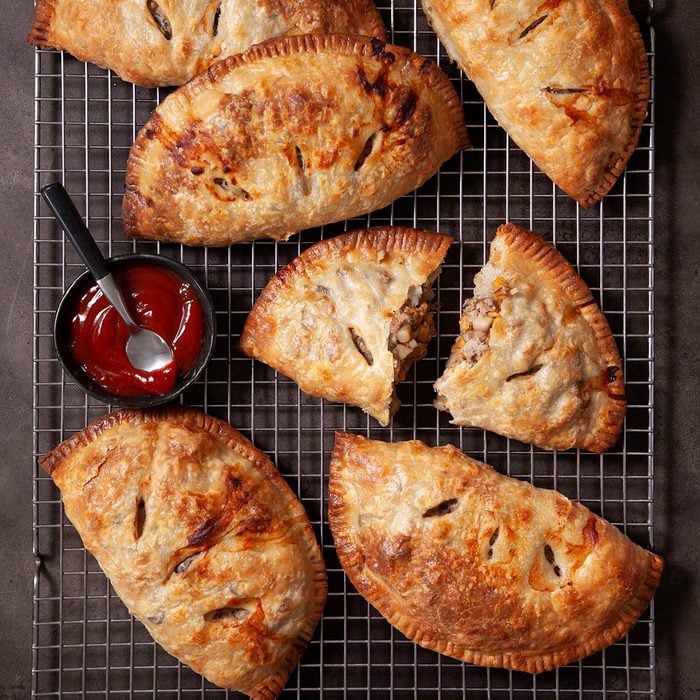Pasties are handheld turnovers filled with meat and vegetables. These savory stuffed pies were originally made for miners in Cornwall, England, to take down into the pits during “crib” time (meal time) because they were an easy, portable and sustaining food. Once the Cornish mining industry collapsed in the 1800s, the workers emigrated all over the world (including to Michigan’s upper peninsula) for a new start, bearing the recipe for their national dish.
What’s the difference between a Michigan pasty and a Cornish pasty?
The difference between a Michigan pasty and a Cornish pasty is simply where it’s made. While the two pasties have generally the same ingredients, the Cornish pasty holds a protected geographical indication (PGI) from the European Union—meaning that you can’t call it a Cornish pasty unless it’s made in Cornwall, England.
While it’s not an official difference, we’ve noticed that a Michigan pasty often uses boiling water to make the pasty dough, while a Cornish pasty often uses cold water. Using boiling water makes it a “hot-water crust,” and this technique creates a much more pliable dough that resists cracking and tearing. Perfect for shaping and assembling pasties!
Pasties Ingredients
- Shortening: Instead of butter, shortening (and sometimes even lard) is used for pasty dough because it helps the dough hold its shape better, making it easier to fold and crimp.
- All-purpose flour: All-purpose flour works well for pasties because it creates the ideal crust texture—strong and stable, yet tender and pliable.
- Potatoes: Red potatoes keep their shape better than other types of potatoes after cooking, and we like to see the chunks of potatoes in the filling of our pasties when we bite into them.
- Rutabagas: This root vegetable is similar to turnips, cabbages and radishes. It adds a nice textural contrast to the softer filling ingredients.
- Ground beef and pork: Our pasties recipe uses a mixture of both beef and pork, simply because we love the taste the two create!
Directions
Step 1: Make the dough
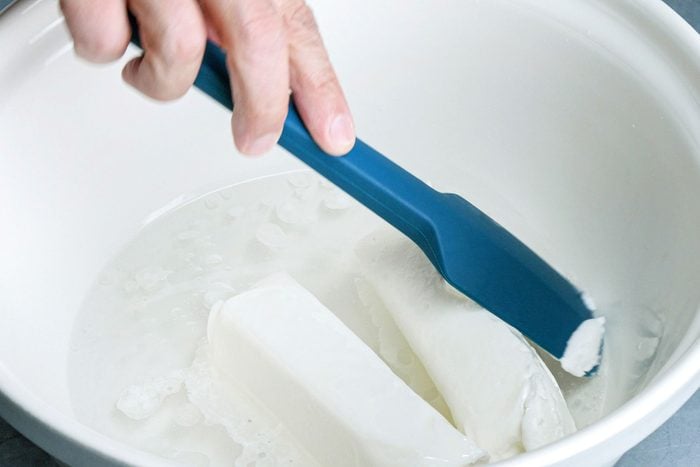
In a large bowl, stir together the shortening and the boiling water until the shortening is melted.
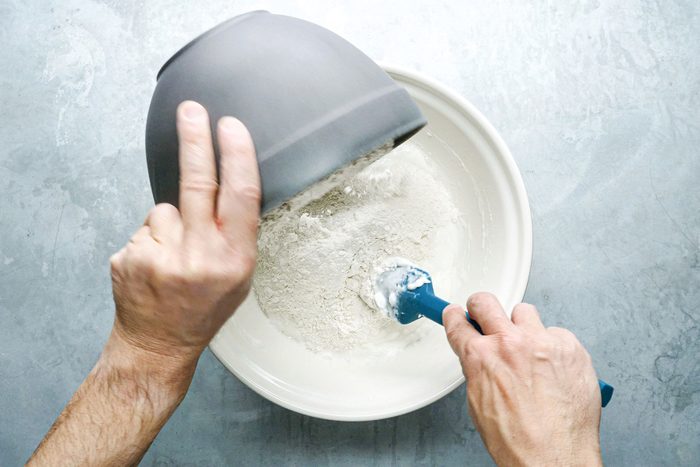
Gradually stir in the flour and salt until a very soft dough is formed. Cover the bowl with storage wrap and refrigerate it for 1 hour and 30 minutes.
Step 2: Create the filling
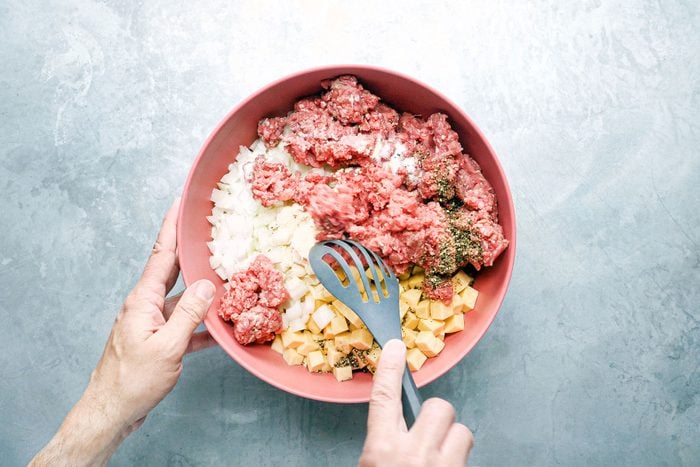
Cut the red potatoes and rutabagas into 1/8- or 1/4-inch cubes. If the cubes are too large or too uneven, the vegetables will not cook properly.
In a large bowl, gently combine the ground beef and pork and crumble the meat. Add in the potatoes, rutabagas, onions and seasonings, and stir gently until everything is evenly combined.
Step 3: Roll out the dough
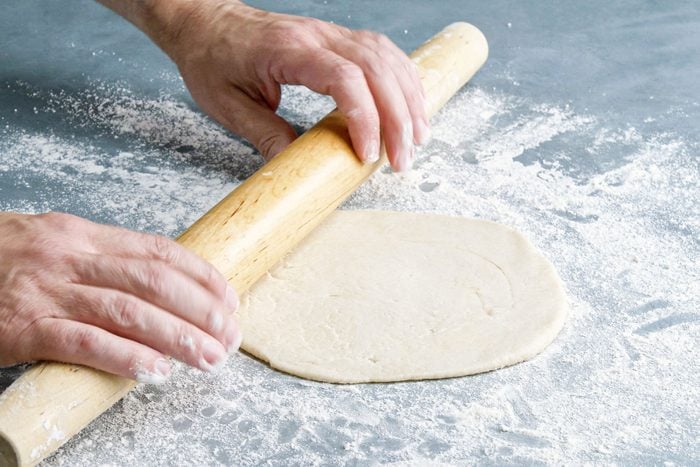
Preheat the oven to 350°F. Divide the dough into 12 equal portions. On a floured surface, roll out one portion at a time into an 8-inch circle.
Step 4: Fill and fold
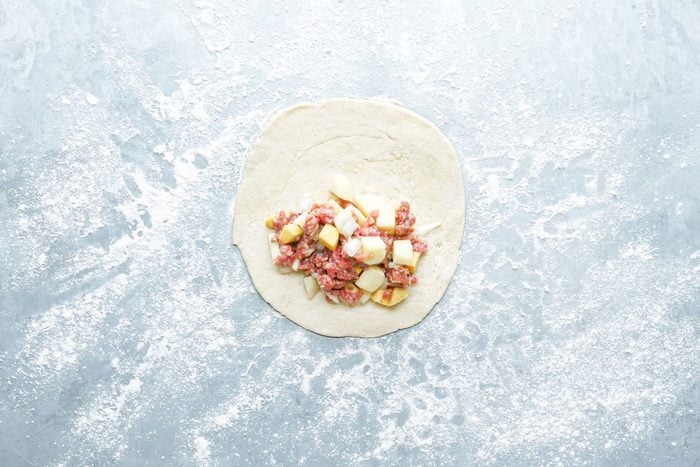
Mound 1-1/2 to 2 cups of the filling on half of each circle. Dot the top of the filling with 1 teaspoon of butter.
Use your fingers or a pastry brush and moisten the edge of the dough with room-temperature water.
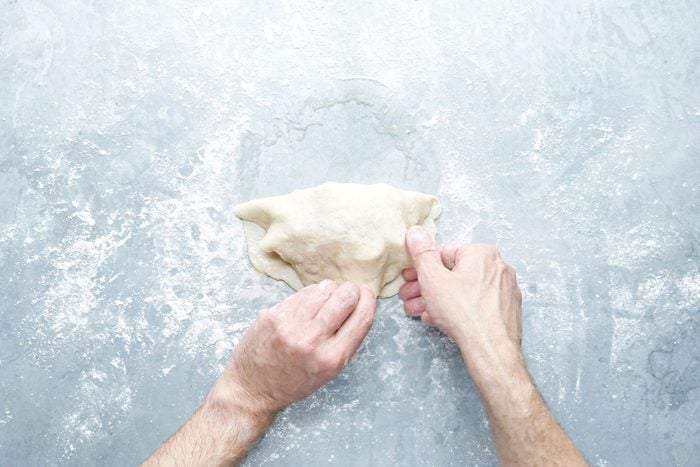
Carefully fold the dough over the filling and press the edge with a fork to seal the pasty.
Step 5: Bake the pasties
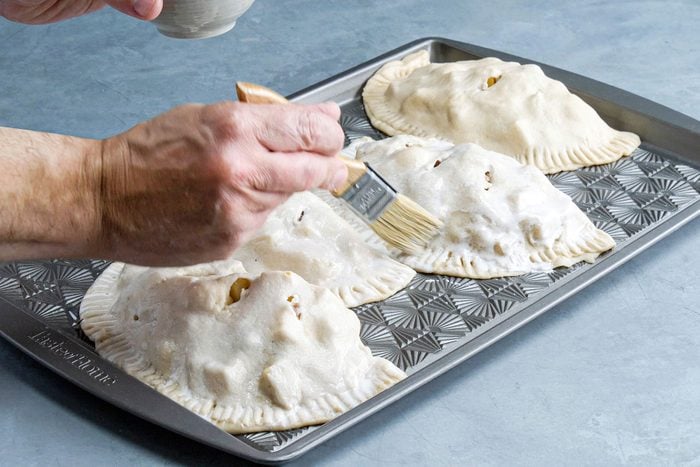
Place the pasties on ungreased baking sheets. Cut several slits in the tops of the pasties to allow steam to escape. For a lacquered shine, brush the outsides of the pasties with cream or a beaten egg.
Bake the pasties for about one hour, until they’re golden brown.
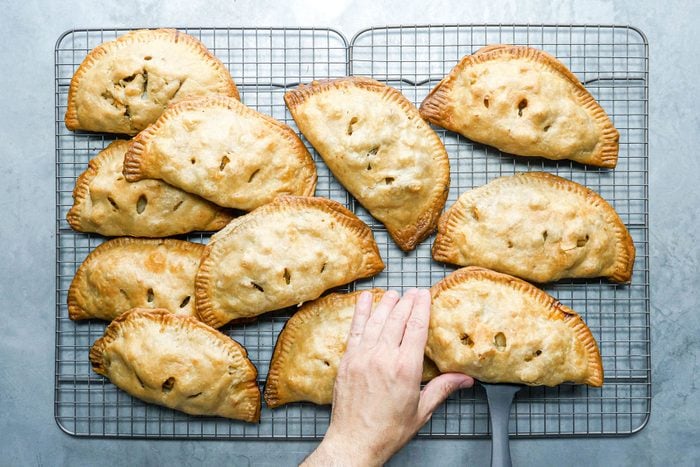
Cool the pasties on wire racks at room temperature. Serve them hot or cold. Store any leftover pasties in the refrigerator.
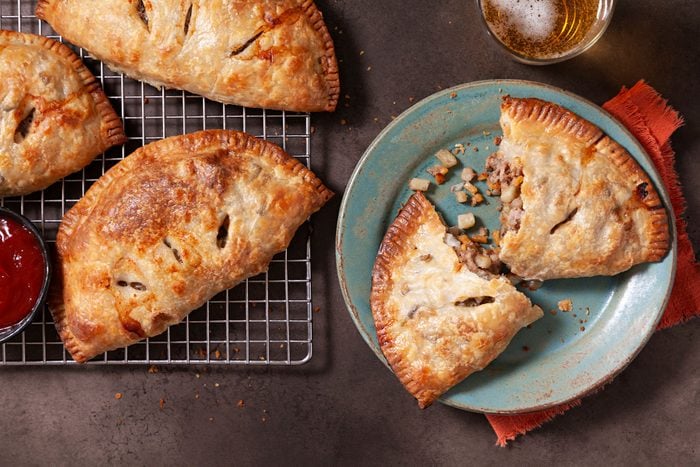
Recipe Variations
- Swap in your preferred protein: We use a mix of ground beef and ground pork for these pasties. You can certainly just use one or the other (like we do in our beef pasties), or swap in ground turkey or chicken.
- Use up your veggies: While this pasty recipe already uses vegetables like onions, potatoes and rutabagas, you can add in any other veggies you may have in your fridge. Carrots, zucchini, bell peppers—use what you got!
- Sprinkle in herbs and spices: Open up your spice cabinet and take a look around. Dried herbs like rosemary, thyme, parsley or sage would work well. A floral herbes de Provence blend or poultry seasoning blend would also complement the ingredients. Pack in some red chili flakes for spice if you like a little heat.
How to Store Pasties
To store pasties, cool them completely to room temperature then place them in an airtight container or resealable bag. Keep them in the fridge for up to three days. Eat them cold or reheat them in a microwave. Use an oven or toaster oven for a crispier crust.
Pasties Tips
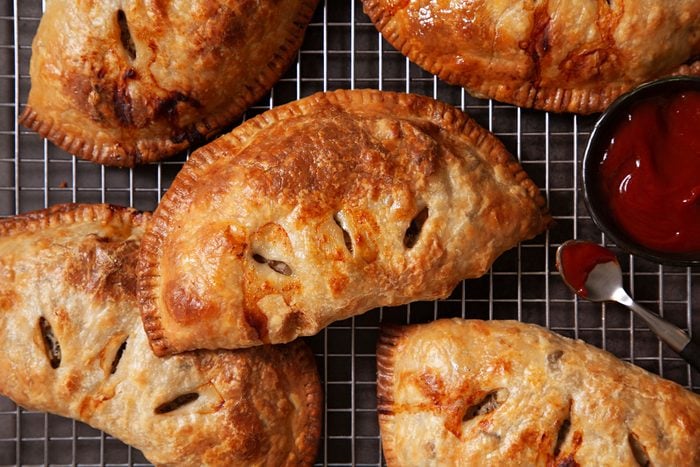
What do you eat with a pasty?
Since pasties were made to be an easy, portable meal, you can enjoy these on their own, or as part of a picnic spread. Take them to the park or to the beach and pair them with other picnic sides dishes.
Do I cook the pasty filling before sealing it in the dough?
No, do not cook the pasty filling beforehand. It’s traditional to stuff the dough with the uncooked filling and let it all bake together in order to create a gravy inside the pasty. Plus, the dough needs a long time to bake, so you wouldn’t be cutting down on baking time by pre-cooking. Pre-cooking the filling will also dry out the ground meat. Just make sure the pasties reach their internal food safe cooking temperature of 160°.




















